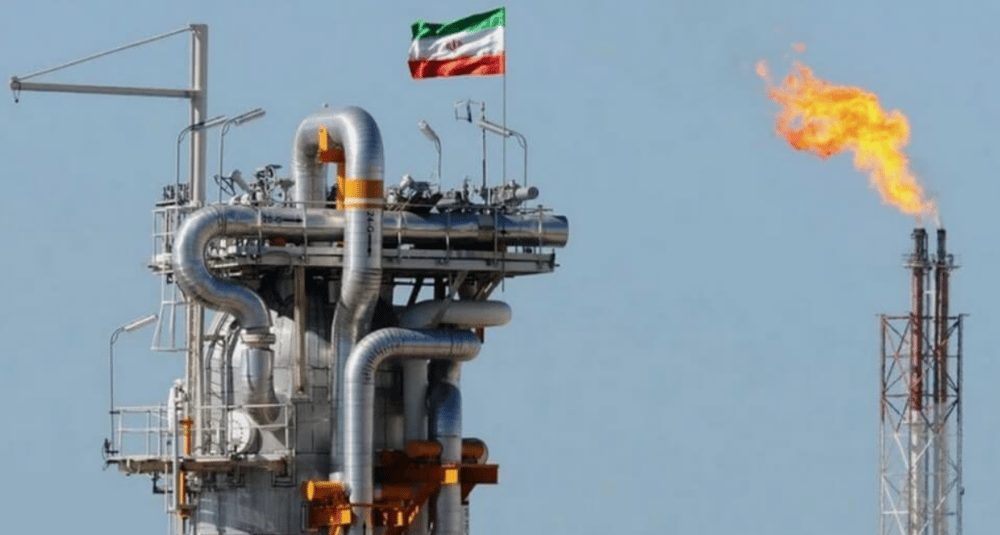Iran Shifts Oil Supply Strategy Amid Escalating Conflict with Israel and U.S. Sanctions Pressure
As tensions between Iran and Israel intensify following a recent outbreak of hostilities, Tehran has begun adapting its crude oil export tactics to preserve revenue flows despite increased scrutiny. With U.S. sanctions still in force and Israeli military pressure mounting, Iran is leaning on a covert fleet of tankers and strategic repositioning near China to sustain deliveries to its top buyer.
This geopolitical shift occurs at a critical juncture for the global energy market, where Brent crude (CO1:COM) remains sensitive to Middle Eastern instability and supply chain opacity. Vessel tracking data confirms that Iran has moved floating storage assets closer to Chinese ports and is now loading ships sequentially to avoid detection.
Iran’s Tactical Pivot in Oil Logistics and Market Implications
Iranian oil exports are central to the country's fiscal resilience amid U.S. sanctions reimposed in 2018, which restrict its access to international banking and energy markets. To bypass these barriers, Tehran utilizes a “shadow fleet” — a network of aging, AIS-silenced tankers that manipulate shipping data and disguise origin points.
In response to renewed military threats and heightened surveillance in the Strait of Hormuz, Iran has altered its strategy. According to tanker analytics firms, vessels are now being filled one-by-one instead of in coordinated fleets, reducing the chance of simultaneous interdictions. More notably, offshore storage units are shifting closer to Chinese territorial waters, enabling quicker, less traceable transfers to local refiners.
This logistical realignment reflects Tehran’s urgency to protect its principal export stream — crude oil — which provides vital USD-denominated revenue. China remains Iran’s most consistent buyer, often purchasing oil through intermediary firms or under barter agreements that avoid direct financial transactions.

Quick Facts
🛢️ Iranian Oil Strategy: Single-vessel loading to reduce interception risk.
📍 Geolocation Shift: Floating storage moved closer to China.
🚢 Shadow Fleet Use: Tankers operate without AIS signals to avoid tracking.
🔥 Conflict Driver: Renewed hostilities with Israel increase regional volatility.
💰 Revenue Imperative: Oil remains Iran’s primary source of foreign currency under sanctions.
Market Response and Strategic Perspectives
Despite these developments, international benchmark prices for Brent and WTI have shown only modest volatility, suggesting that markets currently assess the conflict as a contained risk. However, energy analysts caution that persistent instability in the Gulf — particularly involving Iranian shipping routes — could lead to a repricing of supply risks.
From a legal and compliance standpoint, the repositioning of Iranian crude close to Chinese waters may provoke further U.S. pressure on Beijing to enforce secondary sanctions or limit facilitation by local refiners. However, the decentralized and opaque nature of maritime oil transfers complicates enforcement.
Regional security analysts also highlight the growing overlap between military escalation and energy logistics. Iran’s latest actions indicate a convergence of war-time calculus and economic survival strategy, with oil tankers effectively becoming instruments of asymmetric resilience.

Key Points
Tanker-by-Tanker Loading: A strategy aimed at reducing interdiction exposure in conflict zones.
Offshore Storage Realignment: Moving storage closer to China decreases delivery lead time and detection probability.
Shadow Fleet Resilience: Despite aging vessels, the network supports sanctions evasion.
China’s Role: Continues to provide a critical outlet for Iranian exports via indirect purchases.
Risk Premium Potential: Oil markets may adjust if threats to shipping lanes persist or escalate.
Energy Security, Geopolitics, and the New Oil Transport Playbook
Iran’s latest adaptations in oil logistics underscore the complex interdependence between geopolitics and global energy flows. As the Iran–Israel conflict introduces new threats to maritime security and sanctions compliance, Tehran’s use of single-vessel loading and near-China storage reflects a dual imperative: strategic concealment and economic continuity.
While markets have yet to fully reprice the associated risks, the fragile balance in the Strait of Hormuz and the opaque movement of sanctioned crude signal longer-term uncertainty for global oil supply chains. For now, Iran’s evolving tactics demonstrate that in the era of geopolitical fragmentation, crude oil is as much a tool of diplomacy as it is a commodity.















Comments
Iran's resourcefulness in navigating sanctions reflects the complexities of global geopolitics.